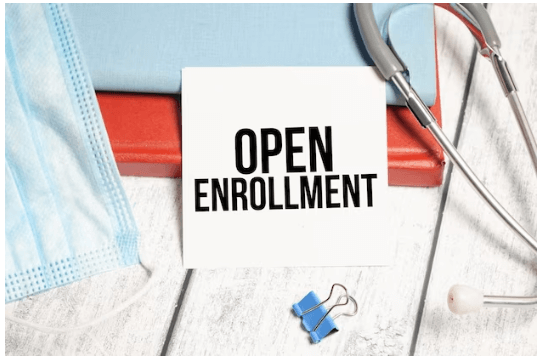Why is Open Enrollment So Short In 2024 | An Ultimate Guide
Open enrollment—the time frame during which individuals can enroll in or make changes to their health insurance plans—is a critical period that significantly impacts millions of people. In this article, we will delve into the reasons behind the relatively short duration of open enrollment and its implications on individuals, healthcare providers, and the industry as a whole.
Contents
- 1 Why is Open Enrollment So Short?
- 2 Definition of Open Enrollment
- 3 Importance of Open Enrollment Period
- 4 Historical Context
- 5 Regulatory Landscape
- 6 Challenges Faced
- 7 Impact on Individuals
- 8 Advocacy for Extended Open Enrollment
- 9 Strategies for Navigating Short Open Enrollment
- 10 Technological Solutions
- 11 Public Awareness Initiatives
- 12 Potential Changes and Reforms
- 13 Industry Responses
- 14 International Perspectives
- 15 Future Outlook
- 16 FAQs
- 17 Conclusion
Why is Open Enrollment So Short?
Open enrollment periods are typically short for several reasons, primarily aiming to strike a balance between consumer needs, administrative efficiency, and risk management for insurance providers. A condensed enrollment window helps create a sense of urgency among individuals to review and select their health insurance plans promptly. This urgency is designed to encourage proactive decision-making and discourage procrastination, ensuring that people don’t wait until they urgently need medical care to enroll.
From an administrative standpoint, a short open enrollment period streamlines processes for both insurance companies and government agencies overseeing enrollment. It allows for a more efficient allocation of resources and prevents a constant influx of applications throughout the year. This efficiency is crucial in managing the logistical aspects of processing applications, distributing information, and updating systems.
Moreover, the limited timeframe aids in maintaining a balanced risk pool for insurance providers. By having a predictable enrollment period, insurers can better estimate the number of policyholders and allocate resources accordingly. This helps prevent adverse selection, where individuals might choose to enroll only when they anticipate needing extensive medical services. A well-managed risk pool contributes to the financial stability of insurance companies, allowing them to provide sustainable coverage options for a broad range of individuals.
Definition of Open Enrollment
Open enrollment refers to a specific period during which individuals can enroll in or make changes to their health insurance plans without qualifying for a special enrollment period. This designated time frame typically occurs annually and allows individuals to review and adjust their coverage options. Open enrollment is a critical component of health insurance systems, providing a structured opportunity for people to assess their healthcare needs, explore available plans, and make informed decisions about their coverage.
During open enrollment, individuals can enroll in a new health insurance plan, switch plans, or make adjustments to their existing coverage. This period is not limited to those seeking new insurance; it also allows current policyholders to reassess their needs and adapt their coverage accordingly. The specific dates for open enrollment can vary, but it is commonly set by government regulations or insurance providers.
Open enrollment serves several purposes, including promoting widespread access to health coverage, preventing adverse selection, and facilitating the efficient administration of insurance programs. By offering a defined timeframe for enrollment, open enrollment periods contribute to the overall stability and effectiveness of health insurance systems.
Importance of Open Enrollment Period

The open enrollment period is of paramount importance in the realm of health insurance for various reasons. Firstly, it ensures widespread access to healthcare coverage by providing individuals with a structured timeframe to enroll or make changes to their existing plans. This helps prevent gaps in coverage and ensures that a diverse population has the opportunity to secure health insurance.
Secondly, open enrollment plays a crucial role in managing risk and maintaining the financial stability of insurance providers. By consolidating enrollment within a specific period, insurers can better predict and allocate resources, preventing adverse selection where individuals might only enroll when they anticipate needing extensive medical care. This balanced risk pool contributes to the sustainability of insurance programs and helps control costs.
Furthermore, the open enrollment period fosters informed decision-making among consumers. It encourages individuals to assess their healthcare needs, explore available plans, and choose coverage options that align with their circumstances. This promotes a sense of responsibility and empowerment in managing one’s health.
Overall, the open enrollment period is instrumental in creating a fair, efficient, and stable health insurance system. It balances the interests of individuals, insurance providers, and the overall healthcare ecosystem by providing a designated timeframe for enrollment and plan adjustments.
Historical Context
The evolution of open enrollment duration reflects dynamic shifts influenced by legislative changes, economic factors, and administrative challenges. Understanding this historical context provides valuable insights into the factors shaping the current timeframe, emphasizing the delicate balance between ensuring accessibility for individuals and addressing practical program administration considerations.
Evolution of Open Enrollment Duration
The timeline for open enrollment has experienced noteworthy fluctuations throughout its history. Examining this evolution offers valuable insights into the diverse factors that have played a role in determining the current duration of the enrollment period.
Factors Influencing the Decision
Several factors have contributed to the decision to maintain a relatively brief open enrollment period. Legislative changes at different junctures have significantly impacted the duration, aligning with evolving healthcare policies and objectives. Economic considerations, such as ensuring the financial sustainability of insurance providers, have been pivotal
Regulatory Landscape
The regulatory landscape refers to the framework of laws, rules, and policies that govern a particular industry or sector. It outlines the legal parameters within which entities operate, ensuring compliance, consumer protection, and fair competition. In the context of open enrollment, the regulatory landscape plays a crucial role in shaping the rules governing enrollment periods, eligibility criteria, and other aspects of health insurance, influencing how individuals access and manage their coverage.
Government Policies
Government policies encompass the set of principles and guidelines established by a governing body to address specific issues or achieve particular objectives. In the context of open enrollment, government policies play a pivotal role in shaping regulations related to health insurance. These policies dictate the duration of enrollment periods, and eligibility criteria, and may include provisions to address issues like affordability and accessibility. Government policies aim to create a regulatory framework that ensures the effective functioning of health insurance systems and promotes the well-being of citizens.
Healthcare Industry Standards
Healthcare industry standards refer to established norms and guidelines that govern the practices, protocols, and quality benchmarks within the healthcare sector. These standards cover a wide range of aspects, including patient care, safety protocols, data management, and service delivery. Adherence to healthcare industry standards ensures consistency, safety, and quality across healthcare organizations, promoting better patient outcomes and a more reliable and efficient healthcare system. These standards are often developed and enforced by professional organizations, regulatory bodies, and industry associations.
Challenges Faced
The healthcare industry faces multifaceted challenges, including rising costs, accessibility issues, technological complexities, and regulatory compliance. Balancing affordability with quality care, addressing health disparities, and adapting to evolving technologies pose ongoing challenges. Additionally, navigating complex regulatory frameworks and ensuring healthcare equity further contribute to the intricate landscape. Addressing these challenges requires collaboration between stakeholders and innovative solutions to enhance the overall effectiveness and sustainability of healthcare systems.
Consumer Understanding
Consumer understanding is a critical challenge in the healthcare industry, as individuals may struggle to comprehend complex insurance terms, coverage options, and policy details. Lack of health literacy can hinder informed decision-making during open enrollment. Addressing this challenge involves enhancing educational resources, simplifying communication, and promoting initiatives to improve health literacy. Empowering consumers with clear information can lead to better-informed choices, increased engagement in healthcare decisions, and improved overall outcomes for individuals and the healthcare system.
Administrative Considerations
Administrative considerations in healthcare encompass the challenges related to efficiently managing and processing tasks such as enrollment, claims processing, and data management. Streamlining administrative processes is crucial for the success of open enrollment, ensuring timely and accurate handling of applications, changes, and communications. Factors like technology integration, data security, and workforce capacity play key roles in addressing these challenges. Efficient administrative practices contribute to a smoother operation of healthcare systems, benefitting both providers and consumers during the open enrollment period.
Impact on Individuals
The impact of events, experiences, and societal changes on individuals is profound, shaping their perspectives, emotions, and behaviors. Whether positive or negative, these influences contribute to personal growth, resilience, and the formation of identity. Individual responses to challenges or opportunities vary, highlighting the complexity of human experiences and the unique ways in which people navigate the evolving landscapes of their lives.
Rush for Decision-Making
The rush for decision-making often stems from time constraints, external pressures, or the need to seize fleeting opportunities. In this accelerated process, individuals must quickly weigh options, analyze risks, and commit to a course of action. While haste can lead to decisive outcomes, it also carries the risk of overlooking crucial details or making impulsive choices. Striking a balance between urgency and thorough consideration is essential to navigate the challenges of rapid decision-making effectively and achieve desired results.
Financial Implications
Financial implications encompass the monetary consequences of decisions, events, or policies. Whether in personal finance, business, or government, choices can impact income, expenses, and overall fiscal health. Sound financial planning considers potential gains, losses, and associated risks. Economic shifts, investments, and expenditures all contribute to financial outcomes, influencing individuals and organizations alike. Analyzing and understanding these implications is crucial for informed decision-making, ensuring stability, growth, and resilience in the face of economic dynamics.
Advocacy for Extended Open Enrollment
Advocacy for extended open enrollment emphasizes the importance of prolonging the period during which individuals can enroll in programs or services. This extension provides greater access, accommodating diverse schedules and unforeseen circumstances. By promoting inclusivity and flexibility, advocates aim to enhance participation, ensuring that a broader range of individuals can benefit from the opportunities available during the enrollment period.
Arguments in Favor
Extending open enrollment fosters inclusivity, allowing a broader population to access services. It accommodates individuals with busy schedules, ensuring they have adequate time to make informed decisions. Moreover, an extended enrollment period accommodates unforeseen circumstances and encourages participation from traditionally underserved communities. This approach aligns with principles of equity, supporting diverse needs and promoting widespread access to essential programs or services, ultimately contributing to more comprehensive and representative coverage.
Counter Arguments
Critics argue that extended open enrollment may strain resources, leading to administrative challenges and increased costs. Additionally, a longer enrollment period might not necessarily translate to better decision-making; some argue it could contribute to procrastination or indecision. There’s also concern about potential misuse, as individuals might exploit the extended timeframe for opportunistic reasons. Striking a balance between accessibility and operational efficiency is crucial to address these counterarguments and ensure the effectiveness of any extended open enrollment initiatives.
Navigating short open enrollment periods requires strategic planning. Prioritize pre-enrollment communication to raise awareness, providing clear information about available options. Streamline the enrollment process with user-friendly interfaces and assistance tools. Employ targeted outreach to vulnerable populations and utilize digital platforms for accessibility. Encourage early decision-making by emphasizing the limited timeframe. Leverage technology for reminders and support. Finally, provide robust customer service to address inquiries promptly. These strategies enhance efficiency and empower individuals to navigate short open enrollment periods more effectively.
Early Preparation
Early preparation is crucial in navigating short open enrollment periods. Begin by educating individuals in advance about the upcoming enrollment window and available options. Provide clear, concise information through various channels. Simplify the enrollment process and ensure easy access to relevant resources. Utilize technology for timely reminders. Encourage individuals to gather necessary documentation beforehand, facilitating a smoother and quicker enrollment process. Proactive communication and preparation empower individuals to make informed decisions efficiently within the constraints of a short open enrollment period.
Utilizing Resources
Efficiently navigating short open enrollment involves strategic utilization of resources. Provide easily accessible information through online platforms, ensuring clarity on available options. Leverage educational materials and interactive tools to assist individuals in making informed decisions swiftly. Implement dedicated support channels, such as hotlines or online chat services, for quick assistance. Collaborate with community organizations to extend outreach. By optimizing these resources, individuals can overcome time constraints, making the most of the brief open enrollment period to secure appropriate coverage or benefits.
Technological Solutions
Technological solutions streamline short open enrollment periods. Implement user-friendly online platforms, allowing individuals to easily access information and complete the enrollment process efficiently. Utilize automation for reminders and notifications, ensuring timely action. Employ artificial intelligence and chatbots to provide instant support. Integrating these technological tools enhances accessibility, simplifies decision-making, and contributes to a seamless experience during the limited timeframe of short open enrollment periods.
Role of Digital Platforms
Digital platforms play a pivotal role in short open enrollment periods. They offer accessible, user-friendly interfaces for individuals to explore options, access information, and complete enrollment swiftly. Utilizing secure online channels facilitates document submission and communication. Automated reminders and notifications enhance timeliness. Additionally, the integration of artificial intelligence and chatbots provides instant support, addressing queries efficiently. By leveraging the capabilities of digital platforms, organizations can optimize the enrollment process, ensuring a seamless and responsive experience for individuals within the constraints of a short timeframe.
Mobile Applications
Mobile applications are instrumental in enhancing the efficiency of short open enrollment periods. They provide a convenient platform for individuals to access information, compare options, and enroll in programs or services on the go. With user-friendly interfaces, these applications simplify the decision-making process and streamline document submissions. Push notifications and alerts through mobile apps contribute to timely actions. Leveraging mobile technology ensures broader accessibility and empowers individuals to navigate and complete the enrollment process quickly and conveniently within the constraints of a short timeframe.
Public Awareness Initiatives
Public awareness initiatives are essential for informing the community about critical issues. Utilize various media channels, social platforms, and community events to disseminate information. Engage in educational campaigns, stressing the importance of timely actions during open enrollment. Collaborate with influencers and community leaders to amplify messages. By fostering awareness, these initiatives empower individuals to make informed decisions within specified timeframes, enhancing participation and overall effectiveness during open enrollment periods.
Education Campaigns
Education campaigns are pivotal in navigating open enrollment. Develop comprehensive strategies that leverage various mediums—social media, community workshops, and informational materials. Communicate the significance of enrollment, available options, and deadlines. Tailor content to address diverse audiences and potential concerns. Partner with influencers or community leaders to enhance outreach. Through targeted education campaigns, individuals gain a better understanding of the process, fostering informed decision-making and participation in open enrollment initiatives.
Community Engagement
Community engagement is vital for successful open enrollment. Foster collaborations with local organizations, leveraging their trust and networks. Conduct outreach events, town halls, and informational sessions to address community-specific needs. Utilize social media platforms and community newsletters for consistent communication. Establish a feedback loop to understand concerns and tailor engagement efforts. By actively involving the community, open enrollment becomes more accessible, fostering a sense of ownership and understanding, ultimately leading to increased participation and better outcomes.
Potential Changes and Reforms
Potential changes and reforms aim to enhance the effectiveness of open enrollment processes. Streamlining procedures, extending timeframes, and improving accessibility are key considerations. Implementing technology-driven solutions, increasing public awareness, and incorporating community feedback can contribute to a more inclusive and efficient enrollment system. Evaluating and adjusting policies in response to evolving needs ensures that open enrollment remains a dynamic and responsive mechanism for individuals to access essential programs and services.
Policy Recommendations
Policy recommendations for open enrollment include extending timeframes, allowing for greater flexibility. Implementing user-friendly online platforms can simplify the process, promoting inclusivity. Allocate resources for robust public awareness campaigns to ensure widespread understanding. Gather community input to tailor policies to diverse needs. Periodic reviews and adjustments to policies should be conducted to address emerging challenges. By enacting these recommendations, policymakers can create a more responsive, accessible, and equitable open enrollment system for individuals and communities.
Stakeholder Collaboration
Stakeholder collaboration is crucial for effective open enrollment. Establish partnerships with government agencies, healthcare providers, and community organizations to streamline information dissemination. Foster communication channels for feedback, ensuring policies align with diverse needs. Engage employers, insurers, and advocacy groups in collaborative efforts to enhance accessibility and understanding. By involving a spectrum of stakeholders, open enrollment processes can be tailored to better serve communities, encouraging broader participation and achieving more equitable outcomes.
Industry Responses
Industry responses to open enrollment challenges involve adopting innovative technologies for streamlined processes. Companies are investing in user-friendly online platforms, enhancing customer support through chatbots, and leveraging data analytics for personalized recommendations. Collaborative efforts with healthcare providers and community organizations also contribute to a more holistic approach. By embracing these responses, industries aim to create seamless, efficient, and user-centric open enrollment experiences for individuals.
Insurance Providers
Insurance providers are adapting to open enrollment challenges by implementing digital solutions. They invest in user-friendly online portals, allowing policyholders to easily navigate and make informed choices. Automated tools aid in communication, reminders, and personalized recommendations. Collaborations with healthcare networks and community initiatives further enhance accessibility and understanding. By embracing technological advancements and fostering partnerships, insurance providers aim to create a more transparent and responsive open enrollment process, ensuring policyholders can make well-informed decisions within the given timeframe.
Employer-Sponsored Plans

Employer-sponsored plans are responding to open enrollment challenges by prioritizing employee education. Utilizing online platforms and interactive tools, employers facilitate clear communication of plan details and benefits. Early dissemination of information and personalized assistance contribute to informed decision-making. Additionally, employers explore flexible enrollment periods to accommodate diverse schedules. By focusing on education, accessibility, and flexibility, employers aim to empower employees to make well-informed choices that align with their healthcare needs during the open enrollment period.
International Perspectives
International perspectives on open enrollment vary, with countries employing diverse approaches to ensure public access to essential services. Some nations prioritize comprehensive public education, leveraging digital platforms for information dissemination. Others focus on government-led initiatives, integrating open enrollment with broader healthcare reforms. By examining global strategies, nations can learn from each other’s successes and challenges, fostering a more collaborative and informed approach to improving open enrollment processes on an international scale.
Comparison with Other Countries
Comparing open enrollment practices across countries reveals diverse approaches. Some nations emphasize universal access through government-led initiatives, ensuring coverage for all citizens. Others rely on public-private partnerships, utilizing insurance providers for enrollment. Varied communication strategies, from extensive public education campaigns to targeted community outreach, reflect the cultural context. By examining these global practices, countries can identify effective strategies, adapt to unique societal needs, and enhance their own open enrollment processes for better accessibility and coverage within their specific contexts.
Lessons Learned
Global open enrollment experiences offer valuable lessons. Effective communication, tailored to cultural contexts, enhances understanding. Universal access requires a combination of government initiatives and public-private collaborations. Employing digital platforms streamlines enrollment. Prioritizing education and community engagement fosters inclusivity. Flexibility in enrollment periods accommodates diverse needs. By learning from international experiences, countries can refine their approaches, improving the accessibility and effectiveness of open enrollment systems to ensure comprehensive coverage and better outcomes for individuals and communities.
Future Outlook
The future outlook for open enrollment envisions a continued evolution driven by technological advancements, policy adaptations, and a focus on inclusivity. Digital transformations, including artificial intelligence and data analytics, will enhance personalized recommendations, making the decision-making process more intuitive and tailored to individual needs. The integration of blockchain technology may enhance security and transparency in enrollment systems.
Policy reforms may further extend enrollment periods, fostering flexibility and accommodating diverse schedules. Governments and organizations are likely to invest more in public awareness campaigns, leveraging social media and community partnerships to ensure widespread understanding.
The global landscape suggests increased collaboration among countries to share best practices, contributing to a more harmonized and effective approach to open enrollment. The ongoing emphasis on education and community engagement will likely persist, empowering individuals to navigate the enrollment process with confidence.
FAQs
Why is Open Enrollment So Short?
Open enrollment is kept short to maintain administrative efficiency, align with insurance and regulatory timelines, and encourage timely decision-making. A concise timeframe helps employers and insurers manage the influx of enrollment-related tasks, ensuring a smooth process for both employees and organizations.
How long is open enrollment for most companies?
Open enrollment periods for most companies typically last around two to three weeks. However, the duration can vary, and employers set specific time frames each year for employees to select or make changes to their benefits, such as health insurance and retirement plans.
What is open enrollment duration?
Open enrollment duration varies but commonly spans two to three weeks. Employers and insurers set specific periods, usually annually, during which individuals can enroll in or modify their benefit plans, such as health insurance and retirement contributions.
What is the open enrollment process?
The open enrollment process is the designated period during which individuals can enroll in or make changes to their employee benefits, such as health insurance and retirement plans. It involves reviewing plan options, making selections, and submitting choices within the specified timeframe.
To navigate a short open enrollment period effectively, individuals should prepare in advance, gather necessary documentation, utilize online platforms for quick access, prioritize decisions early, and seek assistance from available resources or support services to ensure timely enrollment.
Conclusion
The short duration of open enrollment poses challenges for both individuals and the healthcare system. Understanding the historical context, regulatory landscape, and potential solutions is crucial for navigating this critical period successfully. While debates about the ideal duration of open enrollment continue, it is clear that a balance between efficiency and comprehensive decision-making is essential. As individuals, policymakers, and industry stakeholders work together, the future of open enrollment holds the promise of positive changes that benefit everyone involved.







